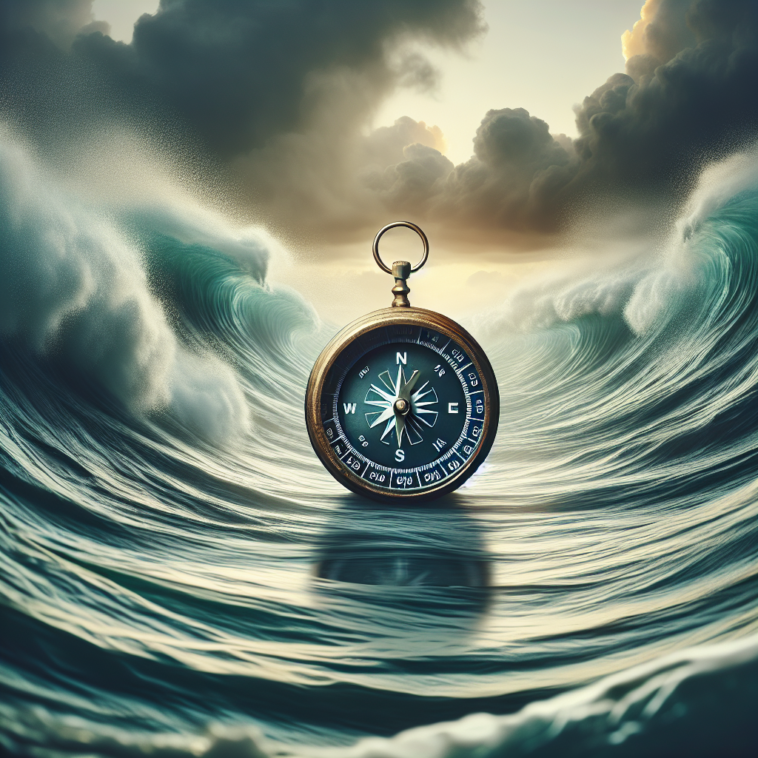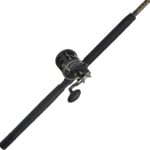So you find yourself in a situation where you need to navigate through waters with strong currents or tidal flows, huh? It can be quite a daunting task, but fear not! With the right knowledge and techniques, you’ll be able to handle these challenging conditions like a pro. In this article, we’ll explore some key tips and strategies that will help you navigate safely and confidently through areas with strong currents or tidal flows. So grab your life jacket and let’s dive in!
Choosing a Route
Understanding the Currents
When it comes to navigating in areas with strong currents or tidal flows, understanding the behavior of the currents is crucial. Currents can have a significant impact on your course and speed, so it’s important to familiarize yourself with their patterns and characteristics. One way to do this is by consulting nautical charts that provide information on tidal flows and currents. These charts show the direction and speed of the currents at different times, allowing you to plan your route accordingly.
Checking Tide Tables
In addition to understanding the currents, checking tide tables is essential for navigating in areas with strong currents or tidal flows. Tides can greatly affect water depth, and knowing the times and heights of the tides can help you avoid shallow areas or areas with strong currents. Tide tables provide information on the predicted tides for specific locations, allowing you to plan your journey during favorable conditions.
Analyzing Water Depth
Another factor to consider when navigating in areas with strong currents is water depth. Understanding the depths of the water can help you avoid running aground or encountering sudden changes in depth that could be hazardous. Nautical charts often include information on water depths, so be sure to review them before embarking on your journey. Additionally, using depth sounders or sonar systems onboard your vessel can provide real-time information on water depths, allowing you to make informed decisions while navigating.
Preparing for the Journey
Reviewing Navigation Charts
Before setting sail in areas with strong currents or tidal flows, it’s crucial to review navigation charts thoroughly. These charts provide detailed information on the layout of the waterways, including channel markers, buoys, and potential hazards. By reviewing the charts, you can identify potential challenges or areas where strong currents may be present. It’s also essential to update your charts regularly, as conditions within waterways can change over time.
Obtaining Local Knowledge
No matter how detailed and accurate your navigation charts are, local knowledge is invaluable when navigating in areas with strong currents or tidal flows. Local fishermen, boating communities, or even experienced sailors can provide valuable insights and firsthand information about the behavior of currents and the best routes to take. Talking to locals and seeking their advice can help you gain a deeper understanding of the navigational challenges and ensure a safer journey.
Equipping a Reliable Vessel
Navigating in areas with strong currents requires a reliable vessel that is well-suited to handle the conditions. Make sure your vessel is in good working order and equipped with the necessary safety equipment. This includes having a properly functioning engine, reliable navigation and communication systems, and adequate fuel and provisions for your journey. Additionally, consider the size and stability of your vessel, as smaller boats may be more susceptible to the effects of strong currents.
Skill Development
Improving Seamanship Skills
To navigate in areas with strong currents or tidal flows, it’s crucial to develop and improve your seamanship skills. This includes mastering boat handling techniques, such as maneuvering in tight spaces, controlling your vessel’s speed, and maintaining a steady course. Practicing these skills in calmer waters can help build your confidence and proficiency before tackling more challenging conditions. Taking seamanship courses or participating in training programs can also enhance your knowledge and skills.
Enhancing Navigation Abilities
In addition to seamanship skills, developing and enhancing your navigation abilities is essential for navigating in areas with strong currents. This includes understanding how to read and interpret navigation charts, using navigational aids like buoys and markers, and employing electronic chart plotters or GPS systems effectively. Regular practice and familiarization with these tools will help you navigate with greater confidence and accuracy.
Gaining Experience in Challenging Waters
One of the best ways to become proficient in navigating areas with strong currents or tidal flows is through gaining practical experience. By gradually exposing yourself to increasingly challenging conditions, you can become more comfortable and skilled at handling your vessel in strong currents. Start by navigating in areas with moderate currents and gradually progress to more challenging waters. This hands-on experience will not only improve your skills but also provide valuable insights into the behavior of currents and how to navigate around them effectively.
Navigation Techniques
Understanding Ebb and Flood Currents
Ebb and flood currents are common in areas where tidal flows are prominent. Ebb currents occur when water flows out from a tidal area, while flood currents happen when water flows into the area as the tide rises. Understanding the timing and direction of these currents is crucial for planning your journey. By knowing when the currents will be in your favor or against you, you can choose the best times to navigate through areas with strong currents, maximizing efficiency and minimizing the risk of encountering challenging conditions.
Using Buoys and Markers
Buoys and markers play a vital role in safe navigation, especially in areas with strong currents. These navigational aids indicate the preferred routes, alert you to potential hazards, and provide valuable information about the conditions ahead. It’s important to understand the meaning of different buoy colors, shapes, and markings to interpret the information they convey correctly. By following the guidance provided by buoys and markers, you can navigate with more confidence and avoid dangerous areas.
Employing GPS and Electronic Chart Plotters
In today’s modern age, GPS systems and electronic chart plotters have become invaluable tools for navigation. These electronic devices provide real-time information on your vessel’s position, speed, and course. They can also overlay navigational charts and display important data, such as the location of buoys, markers, and potential hazards. Utilizing GPS and electronic chart plotters in areas with strong currents can greatly enhance your situational awareness and assist in plotting the safest and most efficient routes.
Understanding Tidal Streams
Determining Direction and Rate
Tidal streams refer to the movement of water caused by tides, and understanding their direction and rate is crucial for safe navigation. Tidal stream atlases and current tables provide information on the expected direction and speed of tidal streams at different times. By consulting these resources, you can determine how the tidal streams will affect your course and adjust your navigation plan accordingly. It’s important to note that tidal streams can vary depending on the water depth and geographical features of the area.
Identifying Slack Water
Slack water occurs when the tidal streams change direction, and the water is briefly still before starting to flow in the opposite direction. Identifying slack water is essential for planning your journey, as it can provide a window of opportunity to navigate areas with strong currents more easily. Slack water typically occurs between ebb and flood currents or vice versa. By timing your passage to coincide with slack water, you can minimize the impact of strong currents and enhance your safety while navigating challenging waters.
Recognizing Key Features
Navigating in areas with strong currents requires a keen eye for recognizing key features that can affect the behavior of the water. These features can include underwater obstructions, such as rocks or sandbars, which can cause turbulence or amplify the strength of currents. Additionally, tidal gates, which are narrow passages connecting two bodies of water, can create intense currents and should be approached with caution. By identifying these key features on your navigation charts and maintaining a vigilant lookout, you can navigate through such areas safely.
Effective Planning
Timing the Passage
Timing your passage through areas with strong currents is crucial for a safe and efficient journey. By understanding the tidal patterns and utilizing slack water, you can plan your departure and arrival times to coincide with favorable conditions. This can significantly minimize the impact of strong currents and make navigation easier. It’s important to consider the time it takes to reach your destination, factoring in currents and potential changes in weather conditions to ensure you have a realistic and manageable plan.
Considering Wind and Weather Conditions
Strong currents are often influenced by wind patterns and weather conditions, so it’s essential to consider these factors when planning your journey. Winds blowing in the same direction as the currents can amplify their strength, making navigation more challenging. Conversely, winds opposing the currents can provide some relief and ease the impact. By monitoring weather forecasts and understanding the interaction between currents and winds, you can make informed decisions about when and how to navigate in areas with strong currents.
Creating a Contingency Plan
No matter how well you plan your journey, it’s always important to have a contingency plan in case unexpected circumstances arise. This includes identifying alternate routes or safe anchorages where you can wait for strong currents to subside. It’s crucial to communicate your contingency plan to your crew and ensure they are aware of the procedures to follow in case of emergencies. Having a well-thought-out contingency plan can provide peace of mind and enhance your safety while navigating in areas with strong currents.
Maneuvering in Strong Currents
Slowing Down and Maintaining Control
When navigating in areas with strong currents, it’s important to slow down your vessel to maintain control and maneuverability. As currents can push or pull your vessel off-course, reducing your speed allows for more effective steering and response to changes in the current’s direction. Additionally, ensuring that your vessel remains under control reduces the risk of collisions with other vessels or navigational hazards. Slowing down and maintaining control is especially crucial when entering narrower channels or congested waterways affected by strong currents.
Maintaining a Safe Heading
Strong currents can create a considerable drift effect, causing your vessel to deviate from its intended heading. To maintain a safe heading, it’s important to compensate for this drift by steering slightly up-current. By doing so, you can counteract the effects of the current and keep your vessel on the desired course. Regularly monitoring your heading and making small adjustments as necessary will help you stay on track and navigate through areas with strong currents more effectively.
Avoiding Collisions
Navigating in areas with strong currents can increase the risk of collisions with other vessels or stationary objects. It’s essential to maintain a vigilant lookout and be aware of your surroundings at all times. Anticipate the movement and behavior of other vessels, considering how the strong currents may affect their course. Communicate your intentions clearly using sound signals or VHF radio if necessary. By staying alert and proactive, you can avoid potential collisions and ensure the safety of your vessel and crew.
Handling Cross Currents
Using Ferry Glides
Cross currents occur when the main current flows perpendicular to your desired course. One effective technique for handling cross currents is to utilize ferry glides. Ferry glides involve positioning your vessel at an angle to the current and using the diagonal current flow to push your vessel across the desired course. By continuously adjusting your heading and utilizing the force of the current, you can maintain control and navigate through areas with cross currents more effectively.
Applying Leeway Correction
Strong cross currents can also cause leeway, which is the sideways drift of your vessel caused by the combined effects of wind and current. To counteract leeway, you can apply leeway correction by steering upwind or up-current. By doing so, you can compensate for the drift and keep your vessel on the desired course. Regular monitoring of your heading and adjusting as necessary will ensure you navigate through areas with cross currents safely and efficiently.
Adjusting Course and Speed
When dealing with cross currents, it may be necessary to adjust your course and speed to maintain control and navigate effectively. Adjusting your course can involve choosing alternate routes, aiming for areas with weaker currents, or utilizing navigational aids such as buoys or range marks to guide your passage. Similarly, adjusting your vessel’s speed can help you better manage the impact of cross currents and maintain maneuverability. By being flexible and adapting to the conditions, you can navigate through areas with cross currents with confidence.
Navigating in Narrow Channels
Utilizing Transits and Range Marks
Narrow channels can pose additional challenges when navigating areas with strong currents. To navigate successfully through these channels, utilizing transits and range marks can be immensely helpful. Transits involve lining up two distinctive objects or marks on land to create a visual reference that indicates the desired course. Range marks, on the other hand, consist of two navigational marks designed to be aligned when your vessel is on the correct course. By following transits or range marks, you can navigate through narrow channels with accuracy, even in the presence of strong currents.
Understanding Rule 9 of Navigation
Rule 9 of Navigation, also known as the Narrow Channels Rule, is essential to understand when navigating in narrow channels affected by strong currents. This rule states that vessels proceeding along the course of a narrow channel should keep to the starboard side of the channel to allow for safe passing. By adhering to Rule 9, you can maintain the expected flow of traffic and minimize the risk of collisions in narrow channels. It’s important to communicate your intentions with other vessels using sound signals and maintain a vigilant lookout to ensure safe navigation.
Maintaining Sufficient Sea Room
Navigating in narrow channels with strong currents can leave little room for error. It’s crucial to ensure that your vessel has sufficient sea room to maneuver safely. Avoid crowding the edges of the channel, as strong currents can push your vessel towards shallow areas or navigational hazards. By staying within the main body of the channel and maintaining a safe distance from the edges, you can navigate through narrow channels with strong currents more confidently and reduce the risk of running aground or encountering obstructions.
Safety Measures
Wearing Life Jackets and Safety Gear
Safety should always be a top priority when navigating in areas with strong currents or tidal flows. Wearing life jackets or personal flotation devices (PFDs) is essential for everyone onboard, regardless of their swimming abilities. Additionally, having safety gear such as throwable flotation devices, first aid kits, and emergency signaling devices is crucial. Regularly check your safety equipment to ensure it is in good working condition and readily accessible in case of emergencies.
Establishing Regular Communication
Maintaining regular communication with shore authorities, other vessels, or a designated shore contact while navigating in areas with strong currents is important for safety. This can be done through VHF radios or mobile phones, depending on the availability of communication devices. Providing updates on your progress, sharing your intended route, and reporting any navigational hazards or emergencies can help ensure timely assistance if needed. It’s important to have a designated person responsible for communicating with authorities and updating them throughout your journey.
Creating a Float Plan
Before embarking on your journey in areas with strong currents, it’s advisable to create a float plan. A float plan is a detailed document that outlines your intended route, estimated time of arrival, and emergency contact information. Share this plan with someone ashore who is responsible for notifying the appropriate authorities in case you do not return within the expected timeframe. A float plan ensures that there is a record of your intended journey, making it easier for search and rescue operations to locate and assist you in the event of an emergency.
Navigating in areas with strong currents or tidal flows requires careful planning, skill development, and adherence to safety measures. By understanding the currents, checking tide tables, analyzing water depth, reviewing navigation charts, and obtaining local knowledge, you can prepare effectively for your journey. Developing seamanship skills, enhancing navigation abilities, and gaining experience in challenging waters will enable you to navigate with confidence. By utilizing navigation techniques, understanding tidal streams, effectively planning your route, handling strong currents, and maneuvering in challenging conditions, you can safely navigate through areas with strong currents or tidal flows. Remember to prioritize safety by wearing life jackets, maintaining communication, and creating a float plan. With proper preparation, skill development, and safety measures in place, you can navigate these challenging waters successfully.





